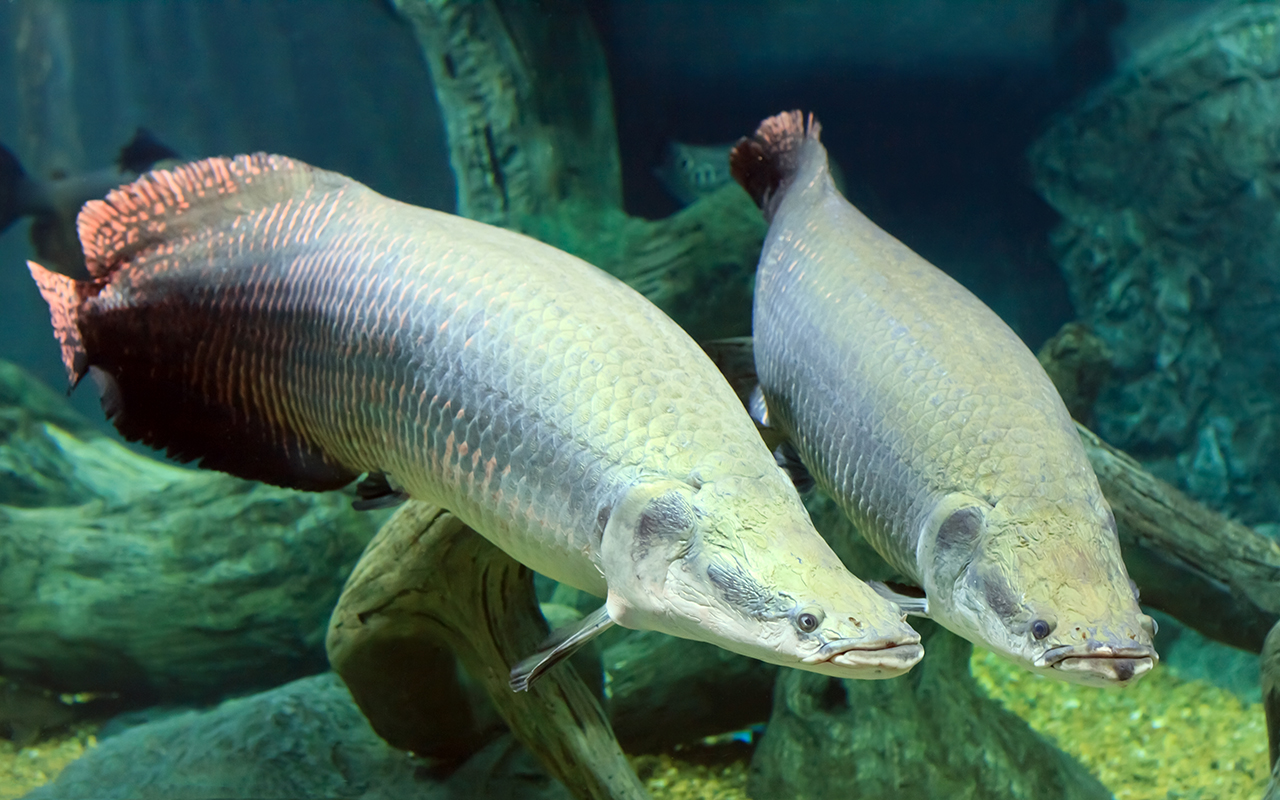News Release
Piranha-proof fish scales offer inspiration for better armor
 |
| Arapaima gigas. Image by iStock.com/kurga |
San Diego, Calif., Oct. 16, 2019 -- The scales of the massive Amazonian freshwater fish, Arapaima gigas, are so tough that they do not tear or crack when a piranha—which has one of the animal kingdom’s sharpest bites—attacks. Material scientists have discovered the secret to the fish’s impermeable armor: each scale is made up of a highly mineralized outer layer that resists penetration and a soft, yet tough, inner layer of collagen that deforms and absorbs pressure, preventing damage from spreading.
The work could serve as inspiration for stronger, lightweight and flexible synthetic armors. Researchers published their findings Oct. 16 in the journal Matter.
The project was led by Marc Meyers, a professor of nanoengineering and mechanical engineering at the University of California San Diego, and Robert Ritchie, a professor of mechanical engineering and materials science at the University of California Berkeley.
Bullet-proof vests have a material structure similar to that of Arapaima’s scales; they are made of internal layers of flexible webbing sandwiched between outer layers of hard plastic. But man-made materials such as these are bound using a third adhesive material, whereas the fish’s scales are bound by collagen on an atomic level; they grow together, weaving into one solid piece.
Other fish use collagen like Arapaima does, but the collagen layers in Arapaima scales are thicker than in any other fish species. Each scale is as thick as a grain of rice. Researchers hypothesize that this thickness is the key to the scales’ toughness.
They tested this by creating cracks in Arapaima scales and soaking them in water for 48 hours, then slowly pulling the edges apart while applying force through a special fixture. As they increased the force, they observed that part of the mineralized, hard outer layer expanded, cracked, and then gradually peeled off. The scales localized the crack, containing it and preventing damage from spreading in the twisting structural collagen layer. If the applied pressure did break through the scale, it deformed the scale rather than breaking it.
Here is a movie showing crack extension from an artificially created crack on a scale during a fracture toughness test:
Movie showing the various plastic deformation mechanisms that retard crack propagation in moist Arapaima fish scales:
Researchers are now investigating how Arapaima’s scales have adapted to prevent penetration from piranha bites as well as how nature behaves this way in other species.
###
Paper title: “Arapaima Fish Scale: One of the Toughest Flexible Biological Materials.” Co-authors include Wen Yang* and Haocheng Quan*, UC San Diego.
*These authors contributed equally to this work
Media Contacts
Liezel Labios
Jacobs School of Engineering
858-246-1124
llabios@ucsd.edu
